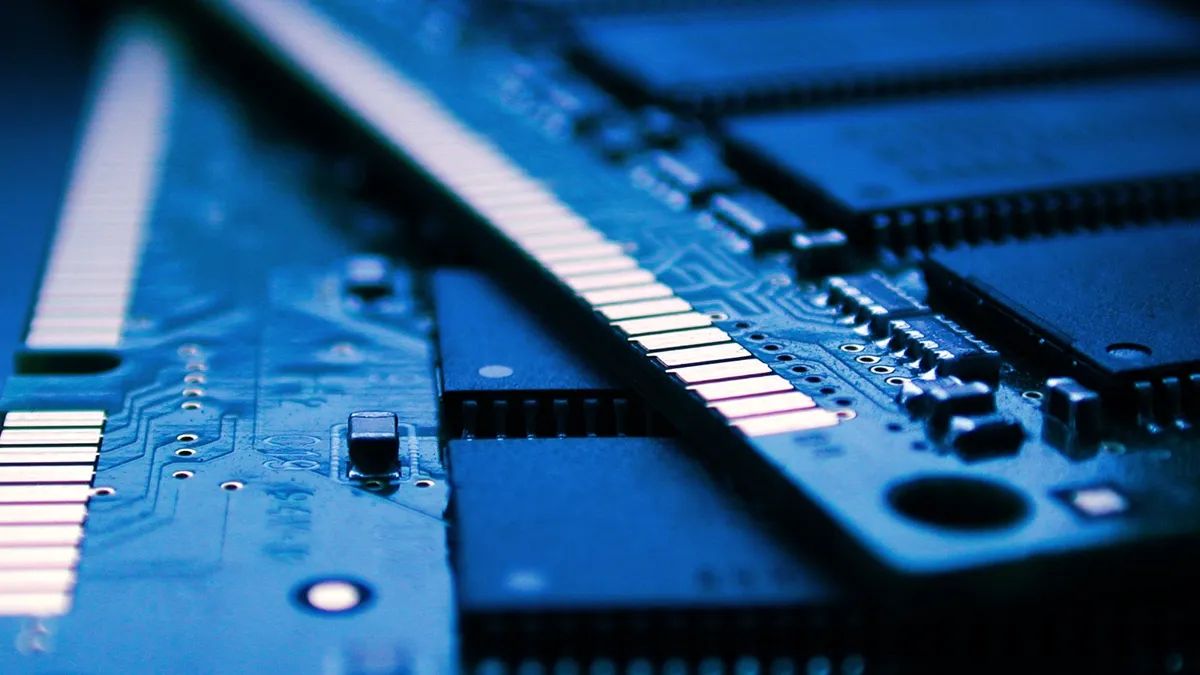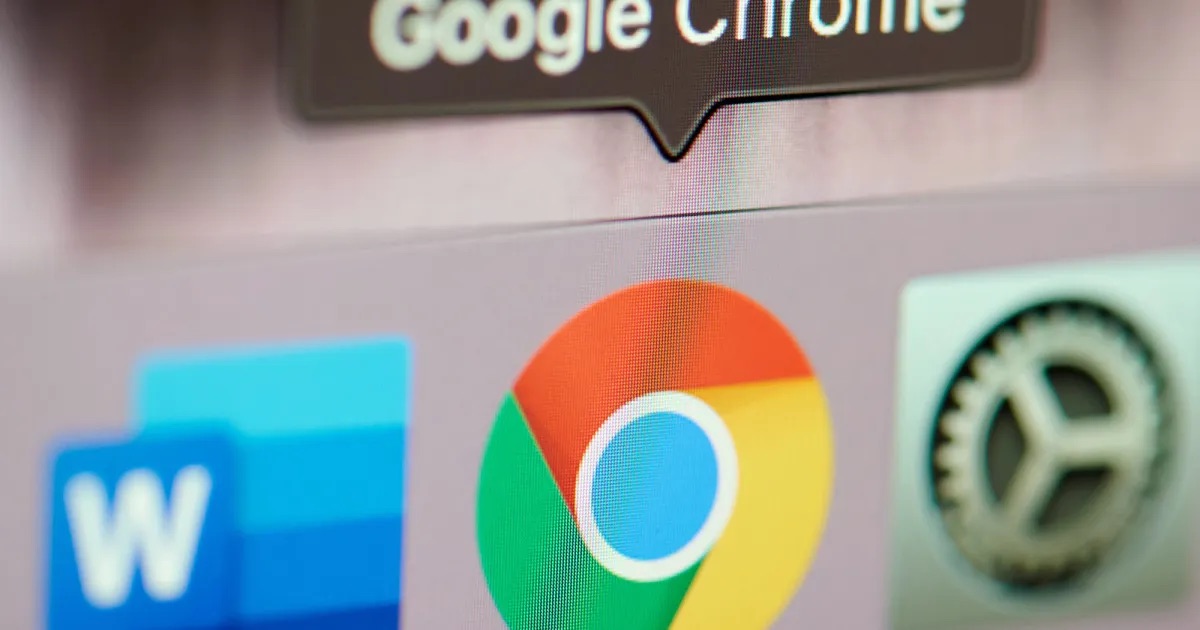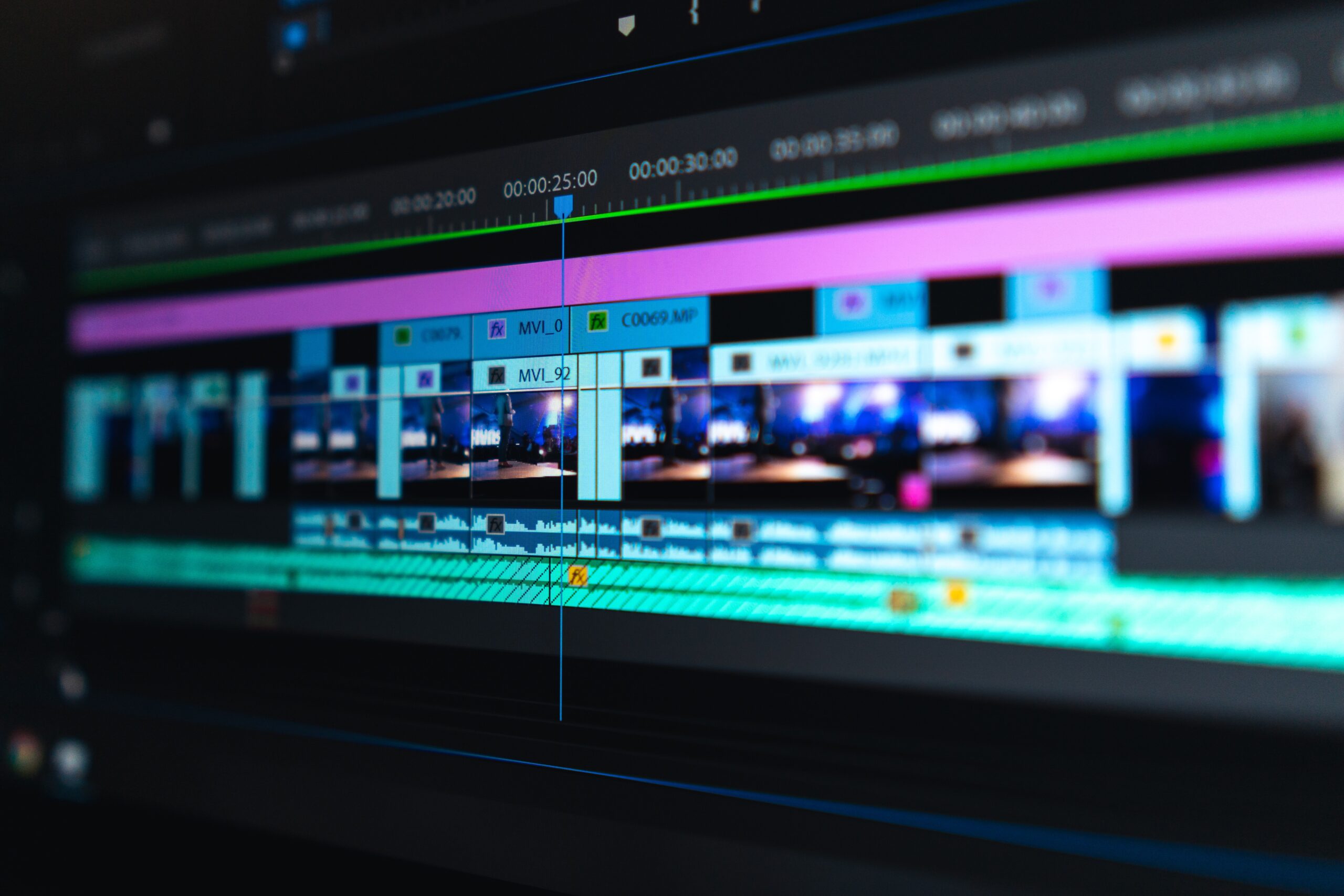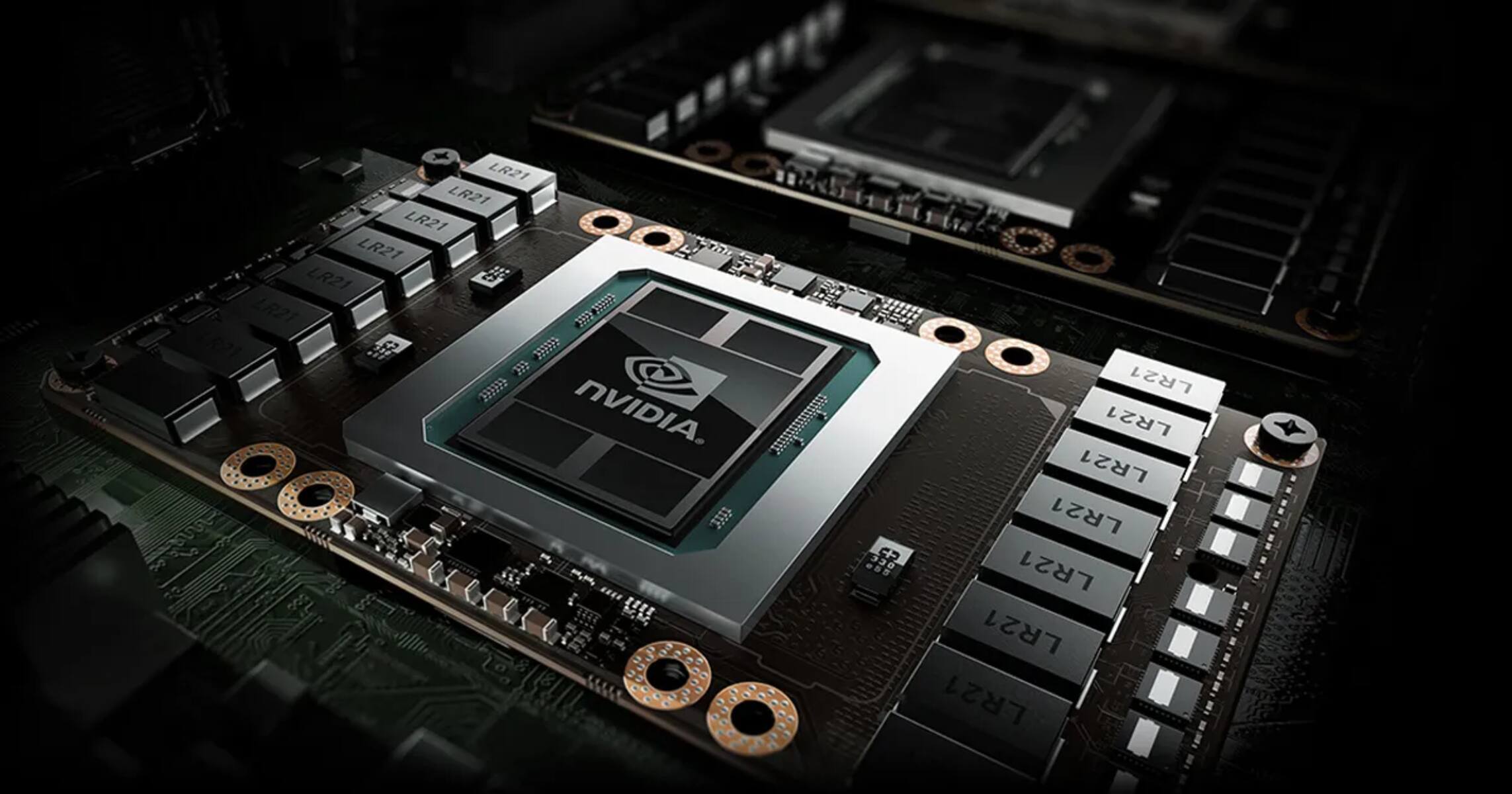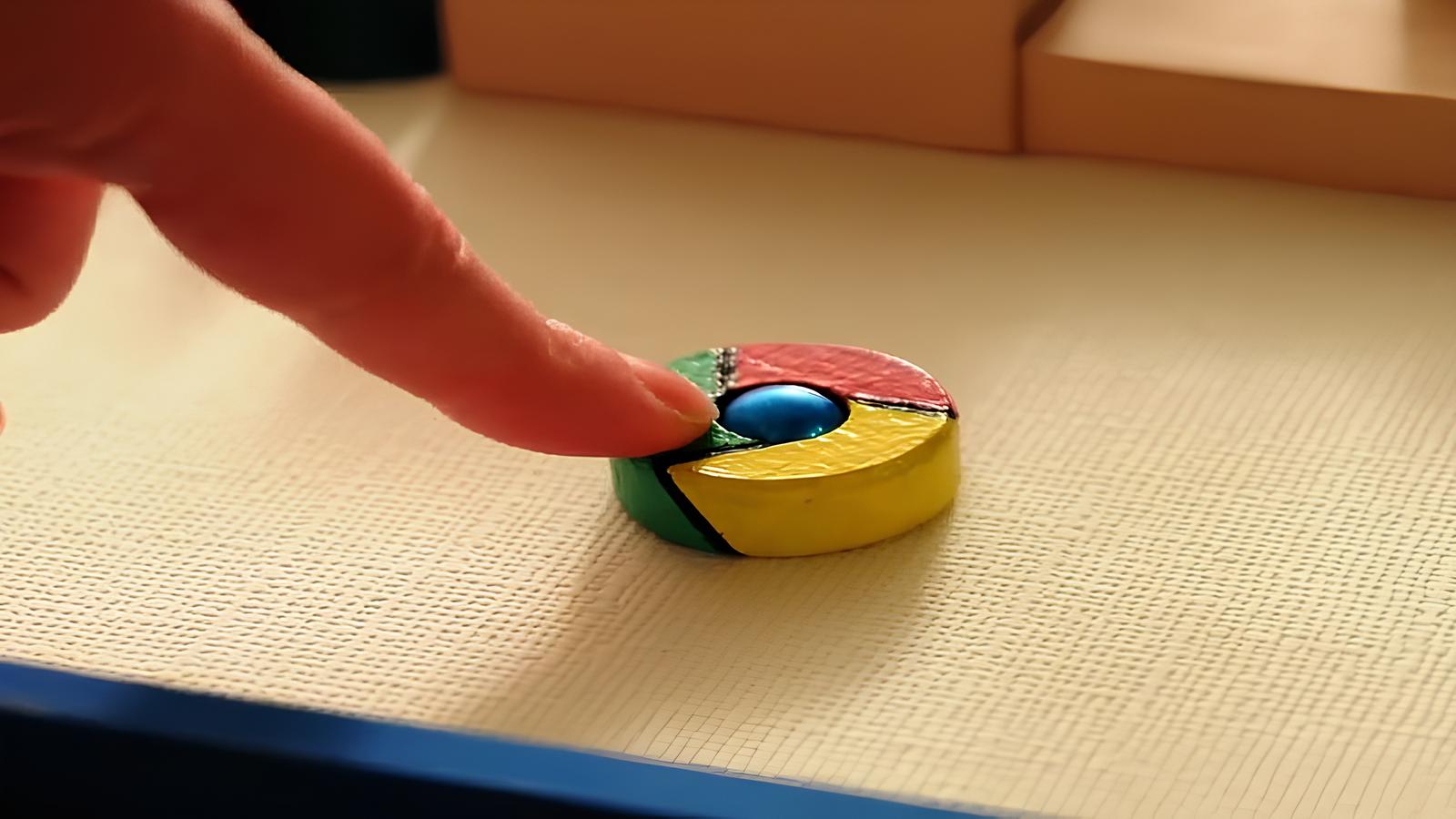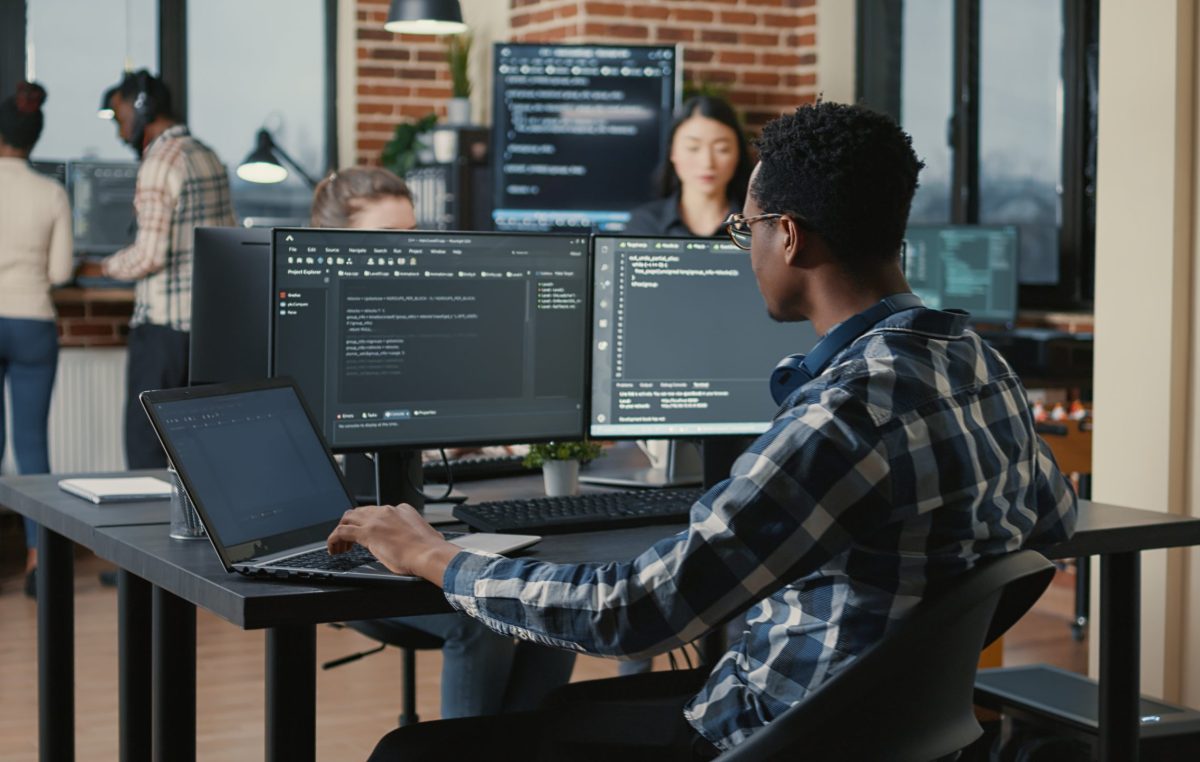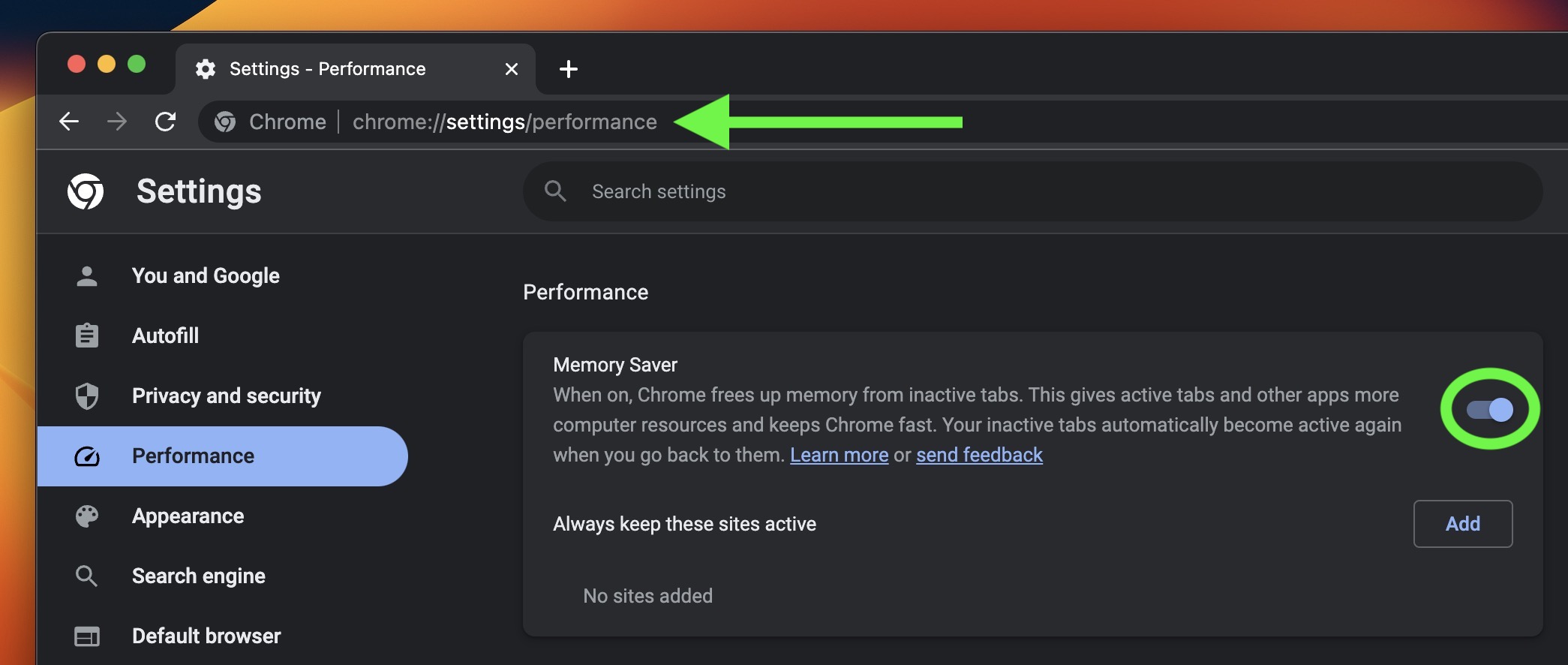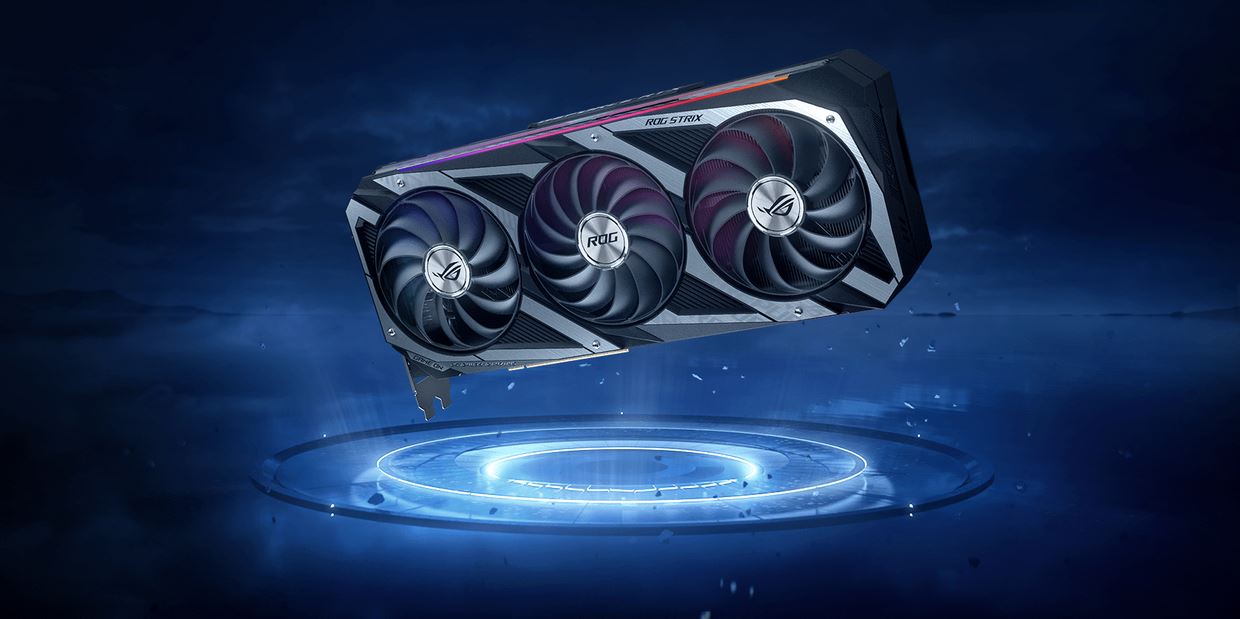Introduction
Clearing GPU memory is a crucial task for optimizing the performance of your graphics processing unit (GPU). Whether you are a gaming enthusiast, a graphic designer, or a data scientist running heavy calculations, understanding and managing GPU memory usage can greatly enhance your computer’s efficiency.
GPU memory, also known as video memory or VRAM (video random-access memory), is the dedicated memory on your GPU that stores important graphical data, textures, and other information for smooth and lag-free performance. As you run applications and processes that use your GPU, such as games or graphic-intensive software, the GPU memory can become cluttered and overloaded, leading to issues like reduced performance, stuttering, or crashes.
By effectively clearing GPU memory, you can free up valuable resources and ensure that your GPU is operating at its full potential. This can be particularly beneficial when switching between resource-intensive tasks or when your GPU is being shared by multiple applications.
In this article, we will explore various methods to clear GPU memory and optimize its usage. We will discuss how to monitor GPU memory usage, identify memory-intensive processes, and employ different techniques to clear the memory. These methods range from simple solutions like restarting your computer or closing memory-hungry applications to more advanced techniques using task managers and GPU memory clearing software. We will also touch upon the importance of keeping your graphics drivers up to date for optimal GPU performance.
Whether you are experiencing performance issues, planning to switch between GPU-intensive tasks, or simply want to ensure that your GPU is running smoothly, this guide will provide you with the necessary knowledge and techniques to effectively clear GPU memory. So, let’s delve into the world of GPU memory management and uncover the best ways to optimize your graphics processing unit for an enhanced computing experience.
Understanding GPU Memory Usage
Before diving into the methods of clearing GPU memory, it’s essential to have a basic understanding of how GPU memory is utilized by your computer. GPU memory plays a crucial role in rendering graphics and handling the data necessary for smooth performance. Understanding how GPU memory is used can help you identify potential memory-draining processes and optimize your system accordingly.
GPU memory is divided into multiple components, including the frame buffer, textures, and shaders. The frame buffer is responsible for storing the final image that is displayed on your monitor, while textures hold detailed information about the colors, patterns, and shapes used in rendering the graphics. Shaders, on the other hand, handle complex mathematical calculations and are crucial for advanced graphics effects.
When you run a GPU-intensive application or process, it allocates a portion of the GPU memory to store the necessary data. This data can include textures, 3D models, shaders, and other graphical elements. As you continue to use these applications, the GPU memory usage increases, especially if you are working with high-resolution textures or complex 3D models.
In addition to the application-specific memory usage, the operating system and other background processes also require a portion of the GPU memory to function. This is why it’s important to monitor the overall GPU memory usage to prevent any bottlenecking or memory exhaustion.
Understanding how your system utilizes GPU memory can help you identify memory-intensive processes that may be causing performance issues. By using tools to monitor GPU memory usage, you can keep an eye on the resource allocation and identify any potential memory leaks or inefficient utilization.
Furthermore, having a clear understanding of GPU memory usage will enable you to optimize your system by adjusting graphical settings in applications or closing unnecessary background processes that are consuming excessive GPU memory. This optimization can improve the overall performance and responsiveness of your GPU, ensuring a smoother experience while running demanding applications or playing graphics-intensive games.
Now that you have gained a better understanding of how GPU memory is utilized by your system, let’s explore the methods to monitor GPU memory usage and identify memory-intensive processes. By doing so, you will be able to effectively clear GPU memory and optimize the performance of your graphics processing unit.
Monitoring GPU Memory Usage
To effectively clear GPU memory, it is crucial to have reliable methods to monitor the current usage of your graphics processing unit. By keeping an eye on GPU memory usage, you can identify any processes or applications that are consuming excessive resources and causing performance issues. Fortunately, there are several tools available that allow you to monitor and track GPU memory usage.
One such tool is NVIDIA’s GeForce Experience software, which provides detailed information about your GPU, including real-time GPU memory usage. GeForce Experience also offers additional features like game optimization, driver updates, and gameplay recording. Similarly, AMD users can utilize the AMD Radeon Software, which provides GPU monitoring capabilities, along with other useful features.
In addition to manufacturer-specific software, there are many third-party applications available that can help you monitor GPU memory usage across different GPU brands. These tools often provide more advanced features and customization options for monitoring GPU performance.
One popular third-party tool is MSI Afterburner, which not only allows you to monitor GPU memory usage but also offers overclocking options, temperature monitoring, and fan speed control. Another option is GPU-Z, which provides comprehensive information about your GPU, including memory clock speed, temperature, and, most importantly, real-time memory usage.
When monitoring GPU memory usage, it is essential to pay attention to both the dedicated GPU memory (VRAM) and shared GPU memory (system RAM that can be allocated for GPU usage). By monitoring both, you can get a comprehensive understanding of the total memory usage and identify any potential bottlenecks or inefficiencies.
Monitoring GPU memory usage is especially beneficial when running resource-intensive applications, such as 3D rendering software or high-definition games. It allows you to gauge how much memory is being utilized and determine whether there is a need to clear GPU memory to optimize performance.
By regularly monitoring GPU memory usage, you can stay informed about the resource allocation and make informed decisions regarding GPU memory optimization. If you notice that the memory usage is consistently high or increasing rapidly without a valid reason, it may indicate a memory leak or an inefficiently coded application that requires attention.
With reliable tools to monitor GPU memory usage, you are equipped with the necessary information to identify memory-intensive processes and take appropriate steps to clear the GPU memory. In the next section, we will explore various methods to identify these processes and optimize GPU memory usage.
Identifying Memory-Intensive Processes
Once you have a clear understanding of GPU memory usage and have the means to monitor it, the next step is to identify memory-intensive processes that may be causing performance issues or consuming excessive resources.
One of the primary tools you can utilize to identify memory-intensive processes is the Windows Task Manager. To access the Task Manager, simply right-click on the taskbar and select “Task Manager” from the menu. In the Task Manager window, navigate to the “Processes” or “Details” tab, depending on your Windows version.
In the Task Manager, you can sort processes by various criteria, such as CPU usage, memory usage, or GPU usage. By clicking on the “GPU” column header, you can easily identify applications or processes that are utilizing significant amounts of GPU memory.
However, it’s important to keep in mind that the GPU memory usage displayed in the Task Manager might not be entirely accurate. Some applications may not accurately report their memory usage, leading to discrepancies in the displayed values. In such cases, it is recommended to rely on specialized GPU monitoring tools, as mentioned in the previous section, for more accurate memory usage information.
Another approach to identifying memory-intensive processes is to use third-party software specifically designed for analyzing GPU memory usage. These tools often provide more detailed information and insights into the memory allocation of running applications. They can help you pinpoint memory leaks, identify applications with high memory usage, and even provide historical data on memory usage patterns.
By identifying memory-intensive processes, you can assess whether they are necessary or if they can be closed or optimized to free up GPU memory. For example, if you notice that a background application or a web browser is consuming a significant amount of GPU memory, you can close unnecessary tabs or disable resource-intensive browser extensions to alleviate the memory usage.
Additionally, if you are working with resource-intensive applications like 3D modeling software or video editing tools, you can adjust their settings to reduce the demand on GPU memory. Lowering texture quality, disabling unnecessary graphical effects, or reducing the rendering resolution can significantly decrease memory consumption without compromising the overall user experience.
Overall, by identifying memory-intensive processes, whether through the Task Manager or specialized monitoring tools, you can gain insights into the resource usage of different applications. This knowledge allows you to optimize GPU memory by closing unnecessary processes, adjusting settings, or considering alternatives that require less memory-intensive resources.
Now that we understand how to monitor GPU memory usage and identify memory-intensive processes, let’s explore the methods to clear GPU memory effectively.
Clearing GPU Memory
Clearing GPU memory is a necessary step to optimize the performance of your graphics processing unit and ensure smooth operation of GPU-intensive tasks. In this section, we will explore various methods to clear GPU memory effectively.
Method 1: Restarting the Computer
A simple yet effective way to clear GPU memory is by restarting your computer. When you restart your computer, all processes and applications are closed, and the GPU memory is completely cleared. This method is particularly useful when you have been running memory-intensive tasks for an extended period or when you notice a significant decrease in GPU performance.
Method 2: Closing Memory-Hungry Applications
Another method to clear GPU memory is by closing memory-hungry applications. Identify any applications or processes that are consuming excessive GPU memory, as discussed in the previous section, and close them. This frees up GPU memory and ensures that it is available for other applications and tasks. Remember to save your work before closing any applications.
Method 3: Using the Task Manager
The Task Manager can also be used to clear GPU memory. Open the Task Manager, select the memory-intensive applications in the “Processes” or “Details” tab, and click on the “End Task” or “End Process” button. This terminates the selected applications and releases the GPU memory they were using. However, exercise caution when using this method, as terminating critical system processes can cause system instability.
Method 4: Utilizing GPU Memory Clearing Software
There are dedicated GPU memory clearing software available that can help you clear and optimize GPU memory efficiently. These tools not only clear GPU memory but also provide additional features and options for managing and optimizing GPU performance. Examples of such software include GPU Boost, GPU Tweak, and EVGA Precision X. Explore these options and choose a reliable and reputable software that suits your requirements.
Method 5: Updating Graphics Drivers
Outdated or faulty graphics drivers can sometimes cause GPU memory issues. Therefore, ensuring that your graphics drivers are up to date is important for maintaining optimal GPU performance. Visit the official website of your GPU manufacturer, such as NVIDIA or AMD, and download the latest drivers compatible with your GPU model and operating system. Updating the drivers can resolve compatibility issues, improve overall GPU performance, and indirectly help in clearing GPU memory.
By utilizing these methods, you can effectively clear GPU memory and optimize the performance of your graphics processing unit. Depending on your specific requirements and the nature of the memory-intensive processes you are running, you can choose the most appropriate method to clear GPU memory and ensure smoother operation.
Method 1: Restarting the Computer
One of the simplest and most effective methods to clear GPU memory is by restarting your computer. Restarting the computer closes all running processes and applications, including those that may be consuming GPU memory. This allows the GPU memory to be completely cleared and starts afresh when the computer powers back on.
When you use your computer for an extended period, various applications and processes can accumulate in the GPU memory, leading to decreased performance or even crashes. By restarting your computer, you effectively clear the GPU memory and give it a fresh start.
Restarting the computer is particularly beneficial when you have been running memory-intensive tasks, such as playing graphics-intensive games or working with 3D modeling software. These tasks can load a considerable amount of data into the GPU memory, which may not be released after the task has completed. Restarting the computer ensures that all memory used by these tasks is freed up and available for future use.
Additionally, restarting the computer also helps with general system maintenance. It allows any background processes or services that may be causing memory leaks or consuming excessive resources to be halted and restarted. This can help resolve memory-related issues and ensure that the GPU memory is in an optimal state.
Although restarting the computer clears GPU memory effectively, it may not be the most convenient option, especially if you have other important tasks or processes running. In such cases, it is best to save your work and close memory-intensive applications manually before initiating the restart.
Overall, restarting your computer is a straightforward method to clear GPU memory and refresh the performance of your graphics processing unit. It is a recommended step to take when you notice a decline in GPU performance, experience glitches or stutters, or simply want to maintain optimal GPU functionality.
Now that you are familiar with the first method of clearing GPU memory, let’s explore the next method: closing memory-hungry applications.
Method 2: Closing Memory-Hungry Applications
Another effective method to clear GPU memory is by closing memory-hungry applications. These are the applications that consume a significant amount of GPU memory, potentially causing performance issues or slowing down your computer. By closing these applications, you can free up GPU memory and improve the overall performance of your graphics processing unit.
To identify memory-hungry applications, you can use the Windows Task Manager. Open the Task Manager by right-clicking on the taskbar and selecting “Task Manager” from the menu. In the Task Manager window, navigate to the “Processes” or “Details” tab (depending on your Windows version).
In the Task Manager, you can sort the processes by various criteria, such as memory usage or GPU usage. Clicking on the “GPU” column header will sort the processes based on their GPU memory consumption. Look for applications that are utilizing a significant amount of GPU memory.
If you identify memory-hungry applications, consider closing them if they are not essential or currently in use. By closing these applications, you immediately free up GPU memory that was previously allocated to them. This can help improve the performance of other applications or tasks that require GPU resources.
It is worth noting that closing memory-hungry applications may require saving your work or progress before doing so. For example, if you are working on a project in a graphic design software or playing a game, make sure to save your work or progress before closing the application. This ensures that you don’t lose any important data.
Additionally, it’s important to be mindful of background applications that may be consuming GPU memory without your knowledge. Some applications, such as browser extensions or system utilities, might use GPU resources even if they are running in the background. Consider closing or disabling unnecessary background processes to free up additional GPU memory.
Closing memory-hungry applications is a quick and effective way to clear GPU memory and optimize the performance of your graphics processing unit. It is especially helpful when you are experiencing slowdowns, stuttering, or other performance issues that may be caused by memory-intensive applications.
Now that you are familiar with the second method of clearing GPU memory, let’s explore the next method: using the Task Manager to clear GPU memory.
Method 3: Using the Task Manager
The Task Manager is a built-in utility in Windows that allows you to monitor and manage running processes on your computer. It can also be used as a method to clear GPU memory by terminating memory-intensive processes.
To access the Task Manager, you can right-click on the taskbar and select “Task Manager” from the context menu. Alternatively, you can press Ctrl + Shift + Esc on your keyboard to open it directly.
Once you have opened the Task Manager, you will see several tabs, such as Processes, Performance, and Details. In these tabs, you can find information about the running processes, system performance, and more.
To clear GPU memory using the Task Manager, follow these steps:
- Open the Task Manager by right-clicking on the taskbar and selecting “Task Manager” from the context menu or by pressing Ctrl + Shift + Esc on your keyboard.
- In the Task Manager window, navigate to the “Processes” or “Details” tab (depending on your Windows version).
- Click on the “GPU” column header to sort the processes based on their GPU usage or memory usage.
- Identify and select the memory-intensive processes that you want to terminate. Be cautious when terminating processes as ending critical system processes can lead to system instability.
- Once you have selected the processes, click on the “End Task” or “End Process” button to terminate them.
By terminating memory-intensive processes through the Task Manager, you release the GPU memory that was being used by those applications or processes. This frees up GPU memory and allows it to be allocated to other tasks or applications, improving overall performance.
However, it’s important to note that closing applications through the Task Manager can sometimes result in data loss or unsaved work. Therefore, make sure to save your work in any open applications before terminating them using the Task Manager.
Using the Task Manager to clear GPU memory is a convenient method, especially when you want to quickly identify and terminate memory-intensive processes that are causing performance issues or consuming excessive resources. It provides you with control over the running processes and allows you to allocate GPU memory more efficiently.
Now that you are familiar with the third method of clearing GPU memory using the Task Manager, let’s explore the next method: utilizing dedicated GPU memory clearing software.
Method 4: Utilizing GPU Memory Clearing Software
Utilizing dedicated GPU memory clearing software is an efficient way to clear GPU memory and optimize the performance of your graphics processing unit. These specialized tools offer features and options specifically designed to manage and optimize GPU memory.
GPU memory clearing software not only clears GPU memory but also provides additional functionalities to enhance GPU performance. These include monitoring GPU temperature, adjusting fan speeds, overclocking, and more. Some popular examples of GPU memory clearing software include GPU Boost, GPU Tweak, and EVGA Precision X.
When using GPU memory clearing software, you can typically find features to clear GPU memory either directly or indirectly. Some software may provide a dedicated button or option to initiate a memory clearing process, while others may offer optimization features that indirectly free up GPU memory by adjusting various settings.
GPU memory clearing software can help identify memory leaks, flush unnecessary cached data, and release memory resources that may not be automatically cleared by standard operating procedures. These tools are particularly useful when you want to fine-tune your GPU performance and optimize memory allocation for specific applications or tasks.
When choosing GPU memory clearing software, it’s important to select a reliable and reputable tool from trusted sources. Carefully read reviews, check for compatibility with your GPU model and operating system, and ensure that the software is from a trusted developer or manufacturer.
It’s also worth noting that some GPU memory clearing software may come bundled with additional features or utilities. These can range from GPU overclocking capabilities to advanced monitoring options. Explore the software’s features and choose one that suits your needs and preferences.
By utilizing GPU memory clearing software, you can efficiently and effectively clear GPU memory, optimize GPU performance, and fine-tune memory allocation. These tools provide you with more control over your GPU’s memory management and allow for a customized approach to clearing GPU memory.
Now that you are familiar with the fourth method of clearing GPU memory using dedicated clearing software, let’s explore the final method: updating graphics drivers.
Method 5: Updating Graphics Drivers
Updating graphics drivers is an essential method for clearing GPU memory and ensuring optimal performance. Outdated or faulty graphics drivers can cause various issues, including memory-related problems and decreased GPU performance.
To update your graphics drivers, you need to visit the official website of your GPU manufacturer, such as NVIDIA or AMD. Look for the “Support” or “Drivers” section and search for the latest drivers compatible with your GPU model and operating system.
When you install new graphics drivers, they not only provide bug fixes and enhancements but also ensure better compatibility and improved memory management. Updated drivers can help resolve memory leaks, optimize GPU performance, and indirectly contribute to clearing GPU memory.
The process of updating graphics drivers varies depending on the GPU manufacturer and the software they provide. Usually, it involves downloading the driver package, running the installer, and following the on-screen instructions. It’s important to uninstall the old drivers before installing the new ones to avoid any conflicts.
Regularly updating your graphics drivers is a good practice to maintain optimum GPU performance and ensure compatibility with the latest software updates. Aim to check for driver updates periodically and install them accordingly to keep your graphics drivers up to date.
It’s worth noting that automatic driver update utilities are available for some GPU manufacturers. These tools can simplify the driver update process by automatically detecting and installing the latest driver versions for your GPU. However, exercise caution when using third-party utilities and ensure that they are from reputable sources.
By updating your graphics drivers, you benefit from the latest optimizations and improvements, including memory management enhancements. This can lead to better GPU performance, reduced memory-related issues, and an overall smoother computing experience.
Now that you are familiar with the fifth method of clearing GPU memory by updating graphics drivers, let’s summarize the techniques and conclude the article.
Conclusion
Clearing GPU memory is essential for optimizing the performance of your graphics processing unit and ensuring smooth operation for GPU-intensive tasks. In this article, we have explored several methods to clear GPU memory effectively.
We began by understanding GPU memory usage and the importance of monitoring GPU memory to identify memory-intensive processes. By using tools like NVIDIA’s GeForce Experience, AMD Radeon Software, and third-party applications like MSI Afterburner or GPU-Z, we can stay informed about GPU memory utilization and make informed decisions.
Next, we explored various methods to clear GPU memory. We discussed how restarting the computer offers a straightforward way to clear the GPU memory by closing all running applications and processes. Closing memory-hungry applications through the Task Manager allows us to reclaim GPU memory quickly for other tasks.
Using the Task Manager, we can monitor GPU memory usage, identify memory-intensive processes, and terminate them to free up GPU memory. We also explored the option of utilizing dedicated GPU memory clearing software, such as GPU Boost or EVGA Precision X, to efficiently manage and optimize GPU memory.
Furthermore, we learned about the importance of updating graphics drivers to improve memory management, resolve compatibility issues, and indirectly contribute to clearing GPU memory. Keeping graphics drivers up to date ensures optimal GPU performance.
In conclusion, clearing GPU memory is a crucial step to maintain the performance and efficiency of your graphics processing unit. By understanding GPU memory usage, monitoring it, and utilizing the appropriate methods like restarting the computer, closing memory-hungry applications, using the Task Manager, utilizing GPU memory clearing software, and updating graphics drivers, you can effectively manage and clear GPU memory to enhance your computing experience.
Remember to assess your specific requirements and always prioritize the stability and functionality of your system. Choose the methods that best suit your needs and make regular GPU memory clearing part of your maintenance routine to ensure optimal performance.







